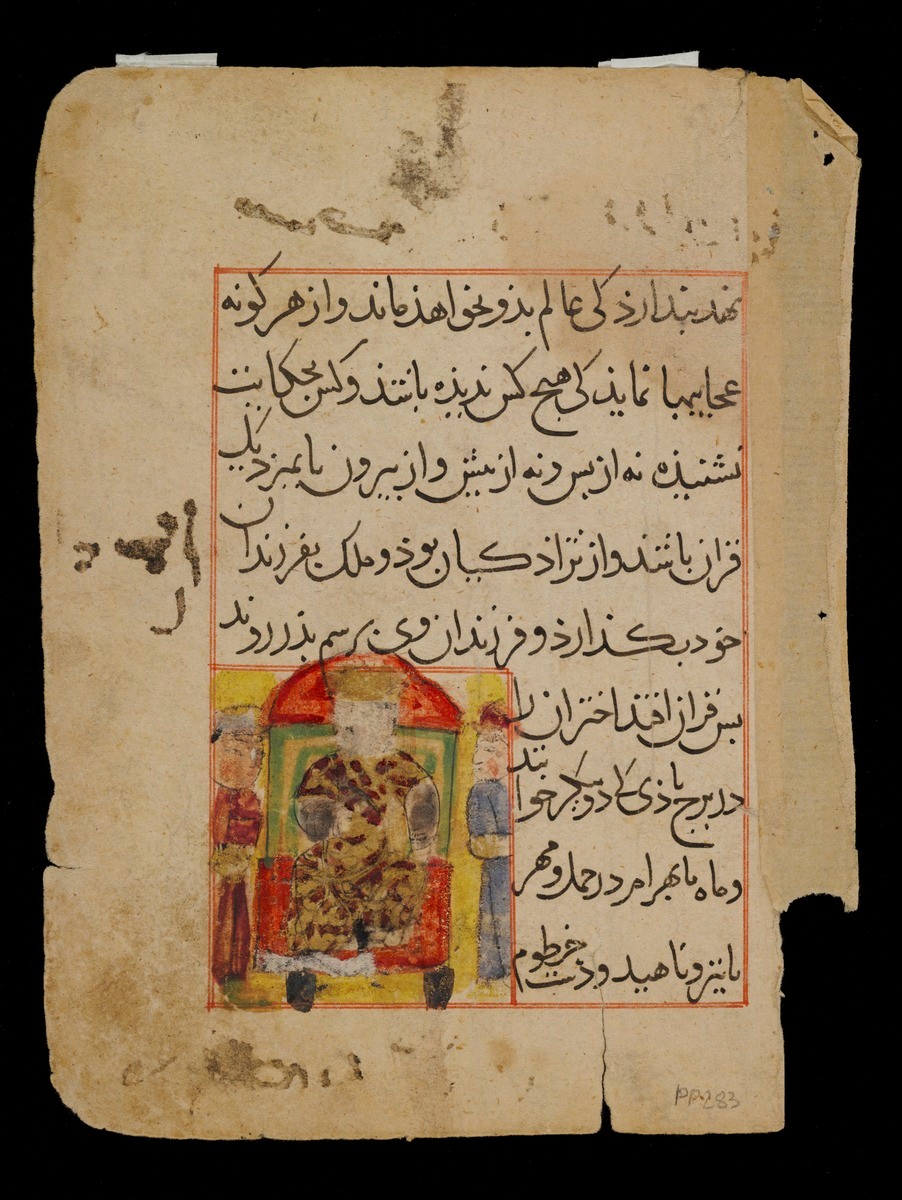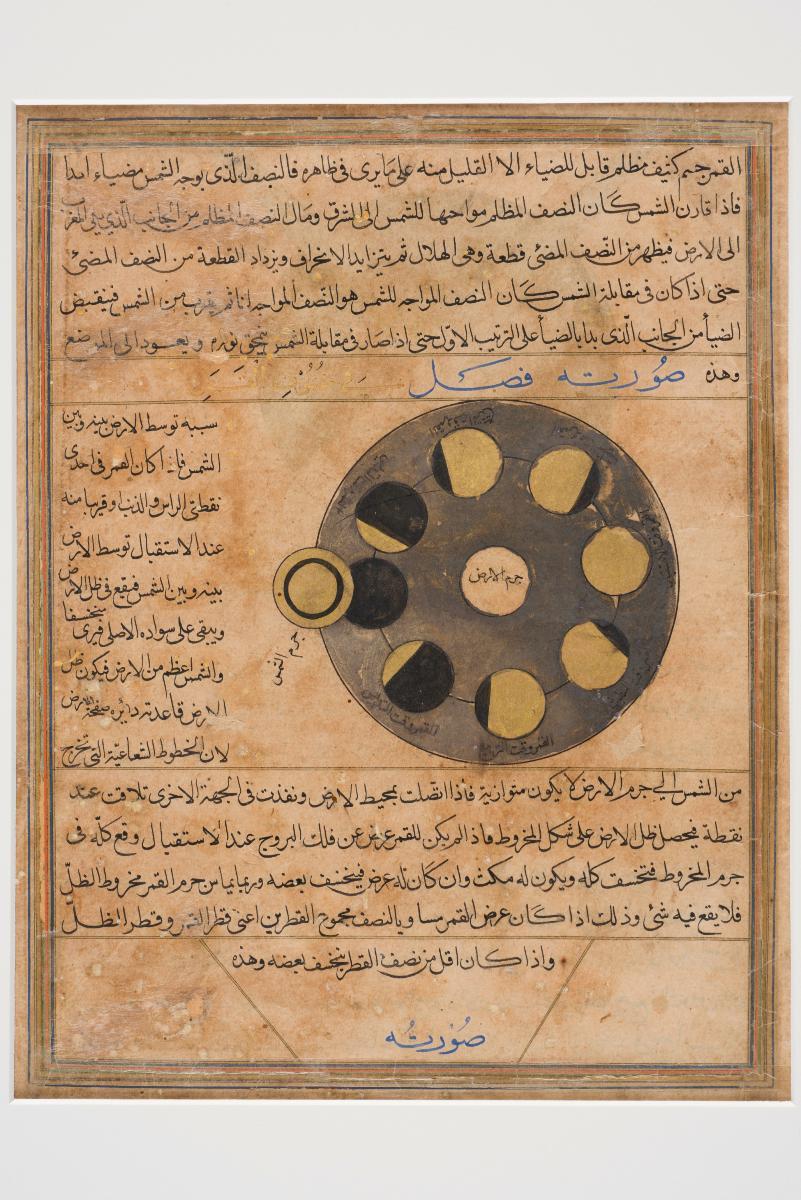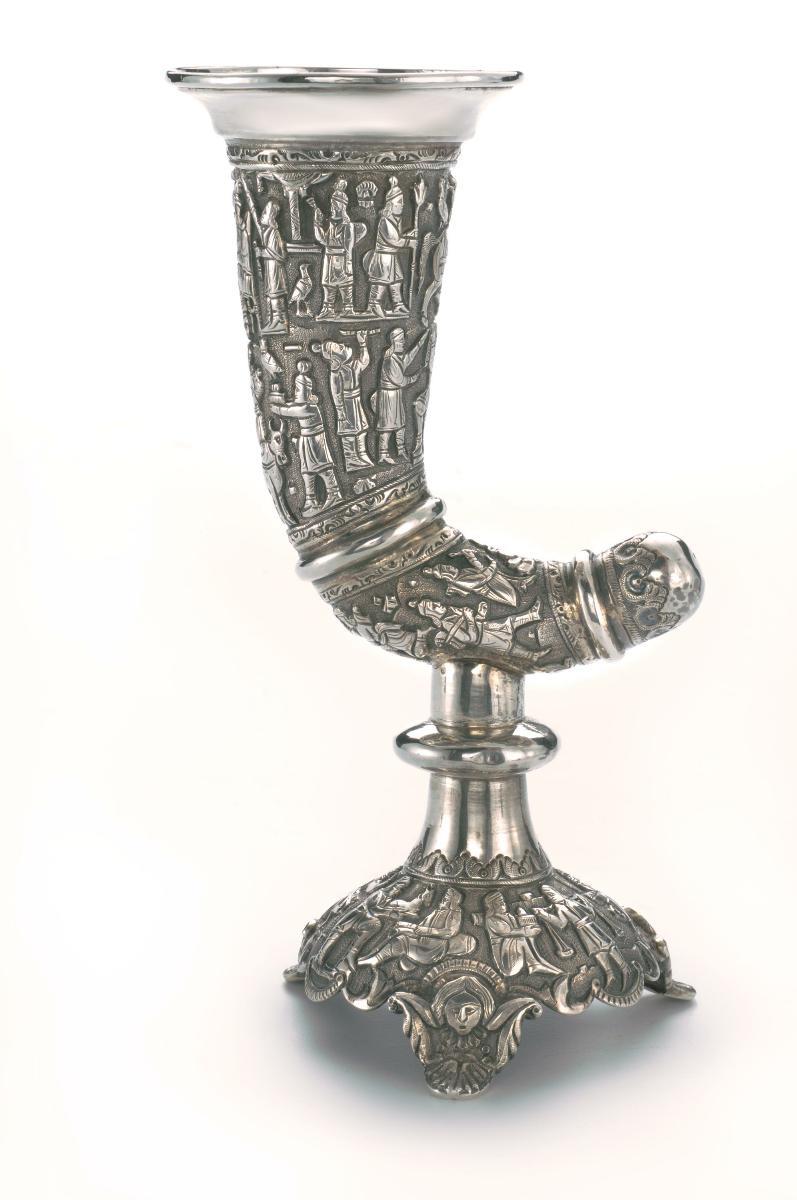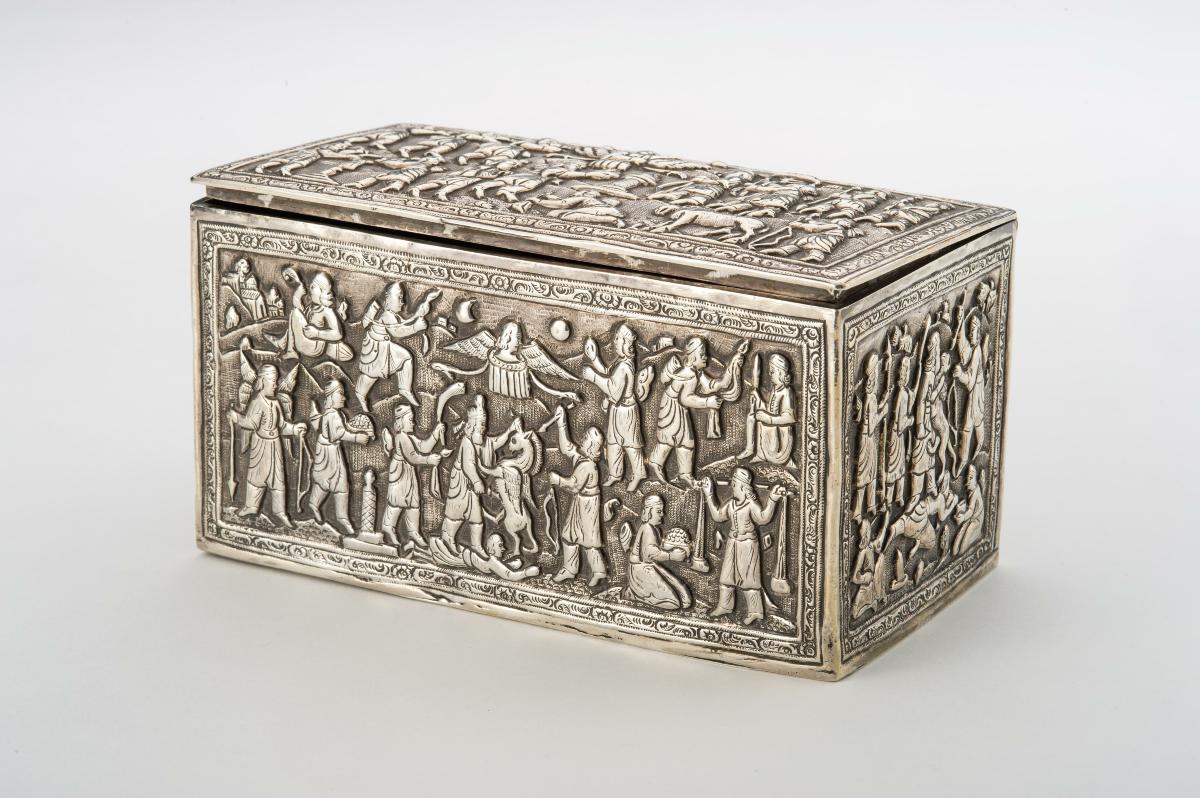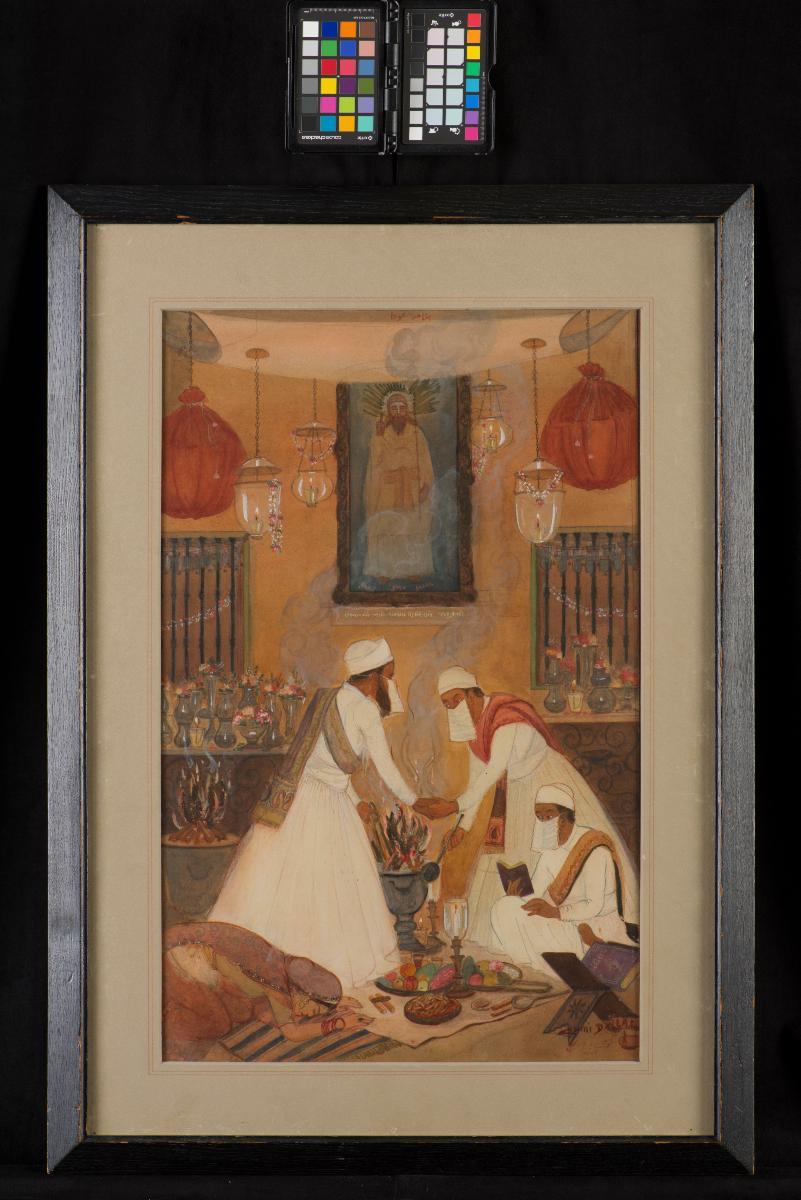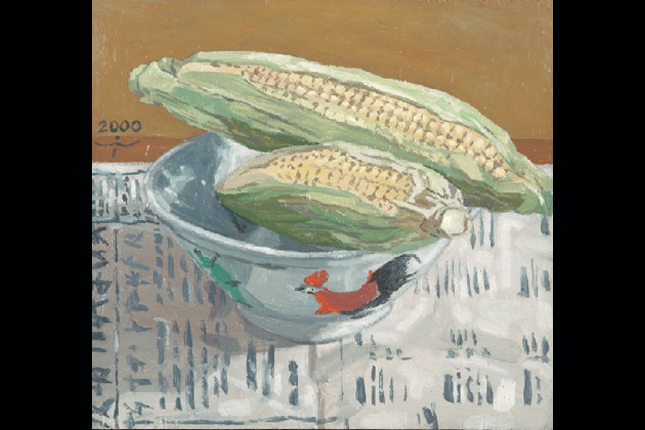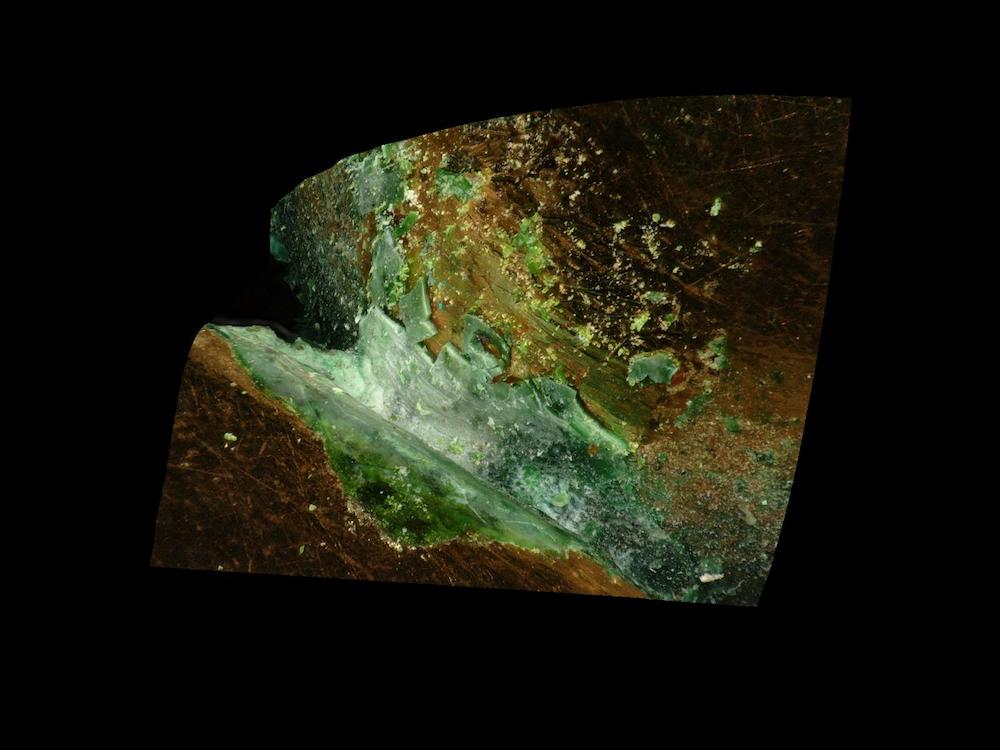This leaf comes an illustrated manuscript copy of an untitled, anonymous text written after the Mongol invasions across Central and West Asia in the 13th century. In the Zoroastrian context, apocalyptic texts are regarded as revelatory in nature, charting the history of the world. One of the narrative devices used is to describe the life and times of kings or other prominent figures through their horoscopes. This leaf details the horoscope of Abu Sa’id Bahadur Khan (1305–35). Abu Sa’id was the last great Il-Khan of the house of Hulagu to rule over the Persian lands. Upon his death, the Il-Khanid empire disintegrated into smaller kingdoms. “Il-khan” means the lesser Khan who is subordinate to the Great Khan in China, thus the Il-Khanids (1256–1353) were a branch of the Mongol dynasty. The verso page depicts a seated ruler flanked by attendants while the recto page bears a box of nine squares with the corner squares diagonally bisected. This is a typical format for Islamic horoscopes where the central square continas the name of the subject and the surrounding fields will chart the 12 celestial houses upon which zodiac signs (marked as Arabic abjad letters) are mapped.




